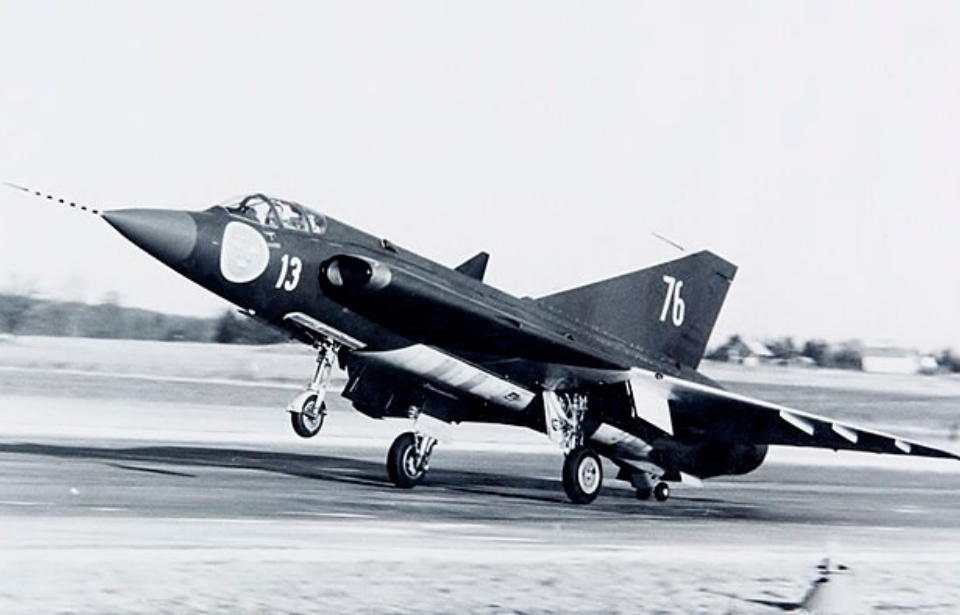After World War II, the demand for advanced jet fighters grew quickly. In the 1960s, the Saab J35 Draken was still a daunting and ambitious project for Swedish engineers; the concept of a tail-less, double-delta wing aircraft was exciting but was also a major step into uncharted territory.
Nevertheless, much like a dragon breathing fire, Saab’s engineers approached this challenge with unwavering resolve—an extraordinary effort that has justly earned this tale legendary status today.
Development of the Saab J35 Draken
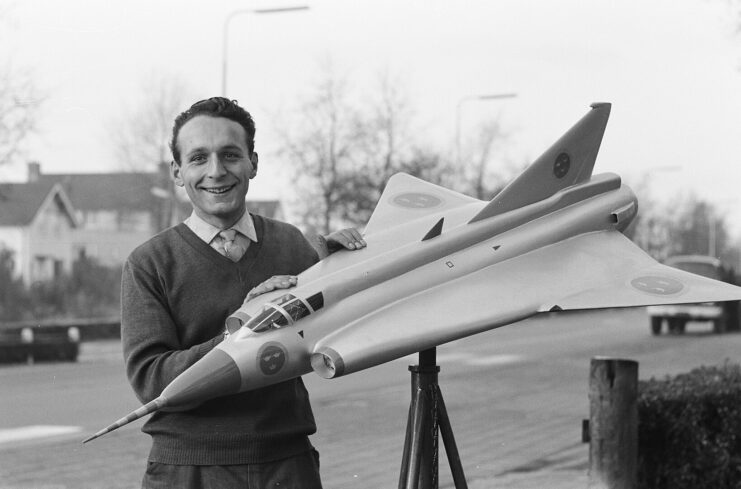
The Swedish Air Force, keen not to lag behind in the race for advanced jet fighter technology, began envisioning a supersonic fighter capable of intercepting bombers at high altitudes. A bold idea took root, and the Defence Materiel Administration announced a set of requirements for a state-of-the-art interceptor.
Unlike its contemporary, the US Air Force’s Lockheed F-104 Starfighter, this Nordic creation had a unique role to play; it was to operate from reinforced public roads, a strategy developed by the Swedish Ministry of Defence during the Cold War to protect against potential nuclear threats. It also had to be capable of conducting operations in all weather conditions.
Enter the Saab J35 Draken – the “Nordic Dragon” – which rose to the challenge.
The J35, a testament to innovative design and engineering prowess, was born from a daring decision to embrace the double-delta wing configuration. Despite being untested and potentially fraught with problems, it offered a solution to most critical issues. The delta wing, with its robust structure and large internal volume for fuel storage, seemed promising, albeit drag prone.
In the absence of modern aids like computer-aided testing and flight simulation, the Swedish engineers embarked on a slow and laborious undertaking. After extensive wind tunnel testing and test flights, they built a small but flyable prototype, the Saab 210 – or “Little Dragon.” Performing splendidly on its first flight over Stockholm in January 1952, the Little Dragon breathed life into the J35 Draken.
Saab J35 Draken specs
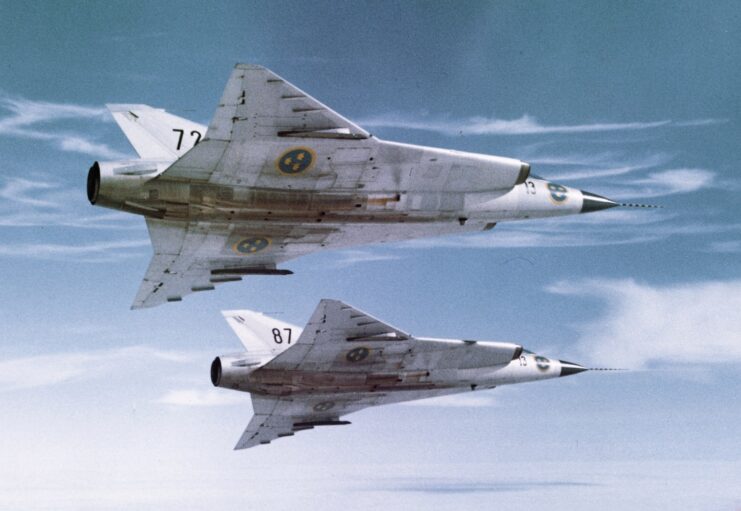
The J35 Draken boasted a unique design featuring an innovative double-delta wing configuration. Characterized by sharp angles, this design was instrumental in delivering high-speed performance while maintaining stability at lower speeds.
Designed for speed, the J35 was equipped with a turbojet engine featuring afterburners, allowing it to surpass Mach 2. Its design was carefully engineered, including a cockpit that provided the pilot with an expansive field of view. Outfitted with advanced radar and fire-control systems, the J35 was regarded as state-of-the-art for its era. The fuselage was divided into front and rear sections, securely connected to accommodate its various systems.
When it came to armament, the J35 primarily carried up to four AIM-9 Sidewinder short-range air-to-air missiles externally. Additionally, it had the capability to store various rockets and bombs internally and could be outfitted with either two 30 mm cannons or extra external fuel tanks.
A rather bouncy start
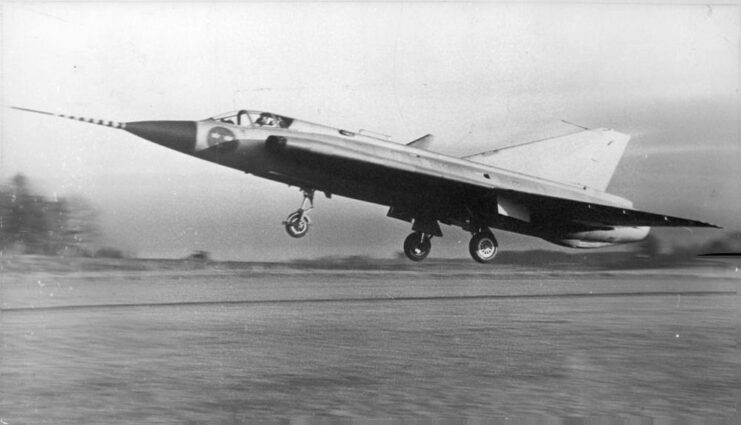
The beginning of the Saab J35 Draken’s service life wasn’t exactly smooth sailing.
The double-delta wing configuration, a revolutionary idea at the time, proved to be a wicked beast to tame. With its unstable nature, landing the aircraft was a high-stakes game requiring manual stabilization – a tricky feat for any pilot. However, as the saying goes, every cloud has a silver lining. In this case, the challenge presented an unexpected opportunity – the discovery of a maneuver unknown to any other nation at the time.
Cobra Maneuver

During their efforts to tame the unpredictable machine, Swedish test pilots discovered a valuable technique: the Cobra Maneuver. When the J35 Draken went into an uncontrollable stall at high angles of attack, they realized that by quickly reducing the angle of attack, they could counter the stall and regain control.
In an instant, they transformed the J35 into a powerful airbrake, drastically reducing its speed.
Thanks to its impressive speed, range, and complex systems, the J35 redefined the idea of a “super stall.” The Cobra Maneuver became a challenging demonstration of controlled stalling, showcasing the aircraft’s exceptional maneuverability and allowing it to serve as a massive airbrake, quickly decreasing speed.
Saab J35 Draken’s legacy
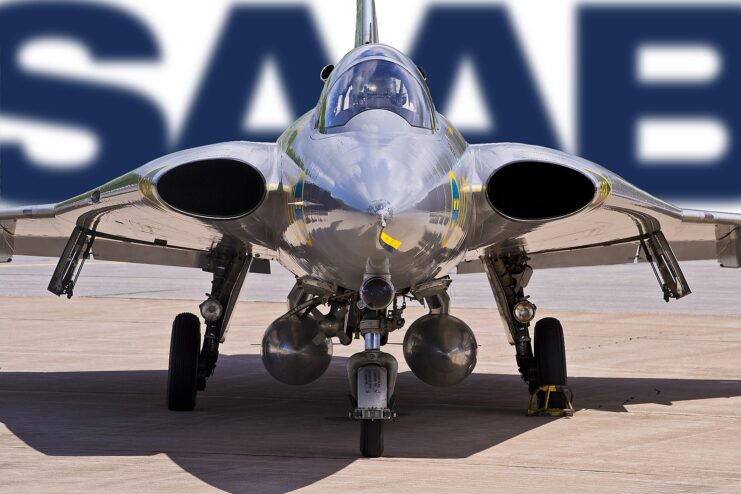
Not only was the J35 Draken a high-altitude interceptor, it also proved to be a capable dogfighter. With impressive quick-turn capability and its high speed, the Swedish fighter was twice as capable as other single-engine jets of the same era. The improved J35B model featured an enhanced power plant, an enlarged afterburner, a redesigned rear fuselage and integrated with the air defense control network, STRIL 60.
More from us: Why Did a Test Pilot Wear a Gorilla Mask In Flight?
While the Cobra Maneuver is now associated with more modern aircraft like the Sukhoi Su-27 and the Mikoyan MiG-29, it’s important to remember where it all began. The J35 Draken took the aviation world by storm and will be remembered as the aircraft that accidentally discovered the maneuver.
